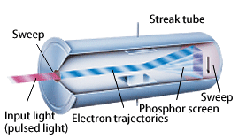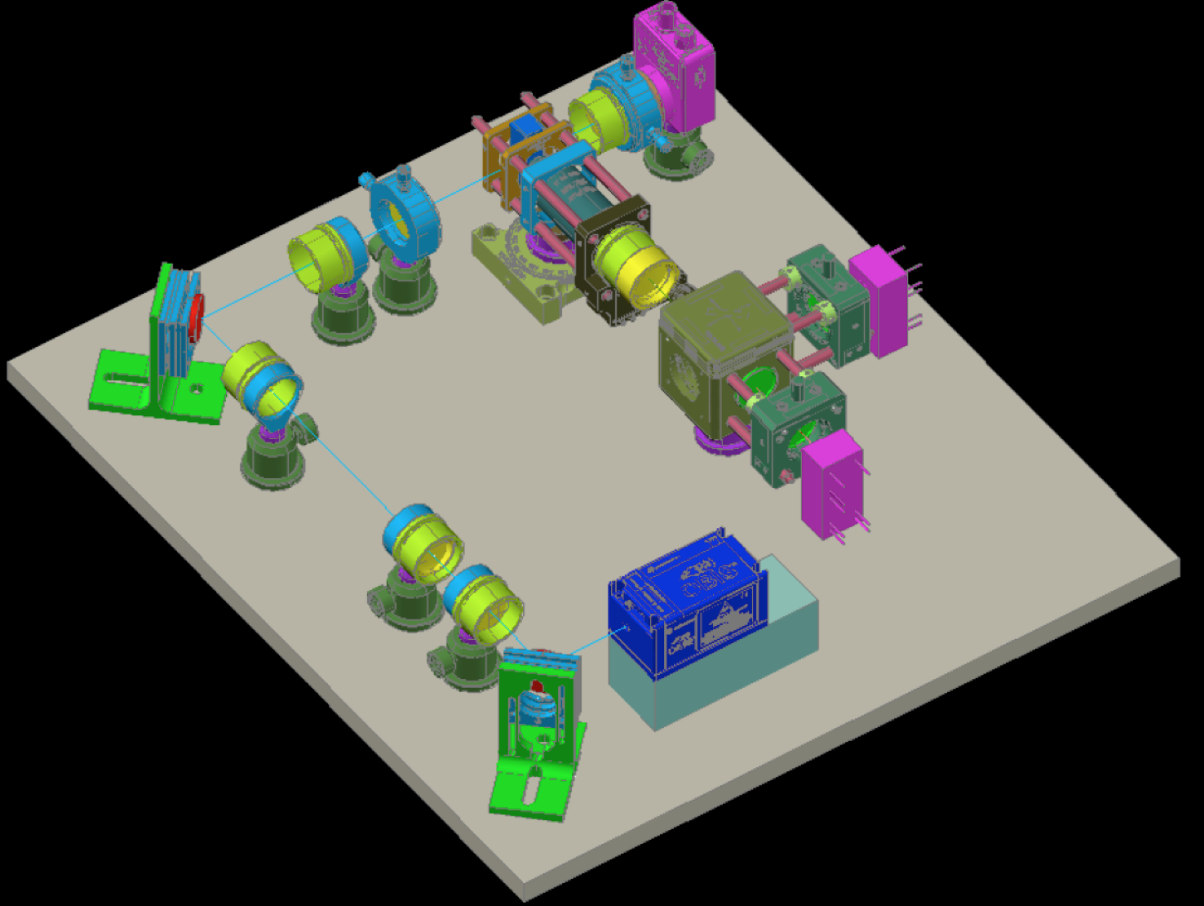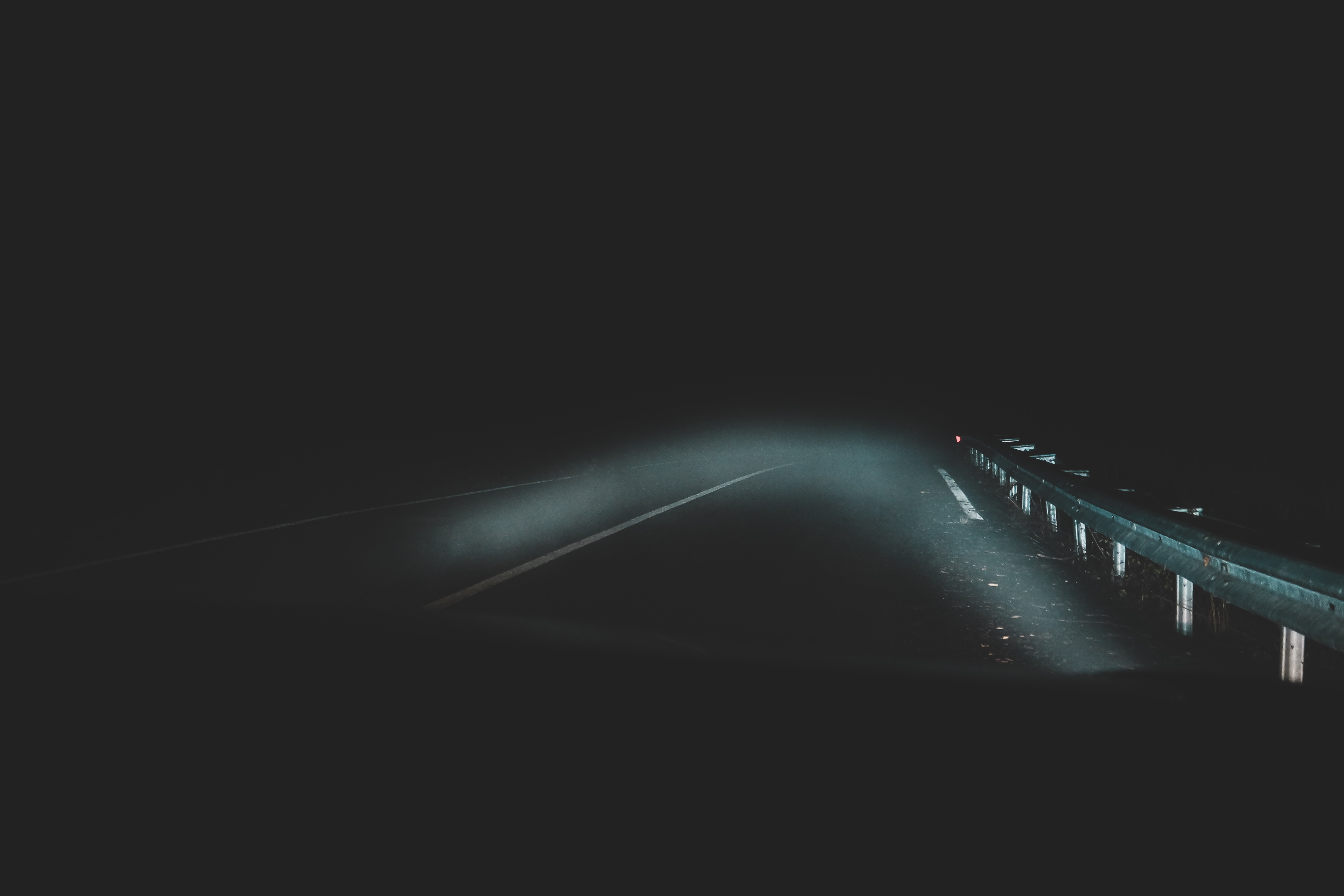Bet You Didn’t Know You Could
I think I should start by explaining what a streak camera is. Then I’ll explain why you should care. At least I’ll explain why I care!
A streak camera is a superbly sophisticated instrument used in ultrafast physics and spectroscopy experiments that allows you to record incredibly short events (on the order of picoseconds or even less) with good temporal and spatial resolution. It works by collecting the light from the subject at hand (say, e.g., a very short flash), converting the light into a beam of electrons, and sweeping that beam across a phosphor screen very rapidly.
When timed properly, the trace made by the beam on the screen is a faithful reproduction of the behavior of the incoming light from the subject. The phosphor screen retains the information long enough (and with enough intensity) for a regular CCD camera to record it. What you end up with is a “picture” where one dimension is spatial and one dimension is temporal: A single flash, for example, would look like a streak along the temporal dimension (hence the name), the length of which streak is directly related to the duration of the flash that it represents.


Figs. 1 and 2: A streak camera and a schematic
of the principle on which it is based.
OK—why should anybody care? Well, beside the fact that these marvels of scientific ingenuity make possible unique scientific experiments, it turns out that you have a perfectly good streak camera with you right now. Two, in fact! I’m talking about your eyes.
Most everyone knows that the eye is a very sophisticated biological camera—the crystalline, the retina, the optic nerve, and so on. It is very sensitive, in fact, able to record very low light levels on par with sensors that are quite hard to manufacture. But did you know you could use your eyes as streak cameras?!?
It isn’t hard to do but it takes some getting used to. All you need is (a) to be in the darkness, and (b) a light source that’s sharp, fairly small, or distant; pointlike works best. (Just use common sense and don’t stare into laser beams, etc.) Then you simply sweep your gaze across the source of light, as rapidly as you can manage it. Most people probably find a sideways sweep easier than a vertical one; try them both when you get comfortable doing it.
What is going to happen, of course, is that the source of light is going to trace a streak across your field of vision: the phenomenon of retinal persistence of the image (it takes some fraction of a second for your rods and cones, the light-sensitive cells on the retina, to “recharge”) is equivalent to what happens on the phosphor screen in a regular streak camera. By paying attention, you take a “snapshot” of the resulting streak image. That takes a bit of practice. A steady light will produce a continuous line; a rapidly pulsing light will produce a line of short dashes or dots.
For example, try it at night on the road (while someone else is driving). You will find that the tail lights of different cars work differently. No way to tell by “just” looking at them (from a distance): you’ve got to “streak” them to tell. Most cars’ tail lights are just on all the time—they must be set up with DC current or have slow response. But many newer/fancier cars are not: their LED-based tail lights, indeed, are pulsed. They’re pulsed faster than your eye can normally see, but you’ve just learned to see even what was meant to be hidden. (This seems to be due to Pulse Width Modulation: by turning the light on/off rapidly, the automakers are effectively dimming the light to give normal tail light function; keeping it steady makes it brighter, as when the brakes are on.)

In time, you will be able to use this ability to dazzle your friends. Well, maybe some friends. It depends. At least you’ll be able to tell apart LED-endowed tail lights from good ol’ boring incandescents. Anyway, even if you only dazzle yourself, it’s pretty cool. Sometimes technology takes inspiration from biology (biomimicry); sometimes it’s the other way around.
Image credits: Hamamatsu (streak camera, diagram); AllenG via Naked Science Forum (tail lights)




